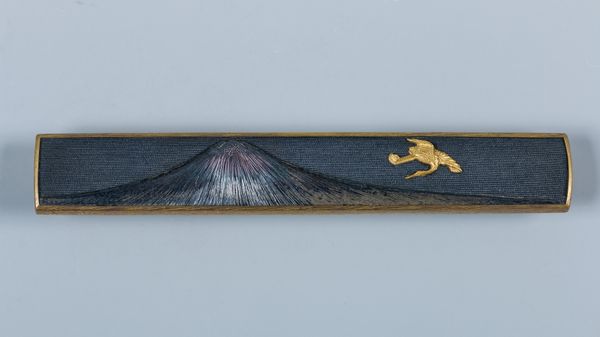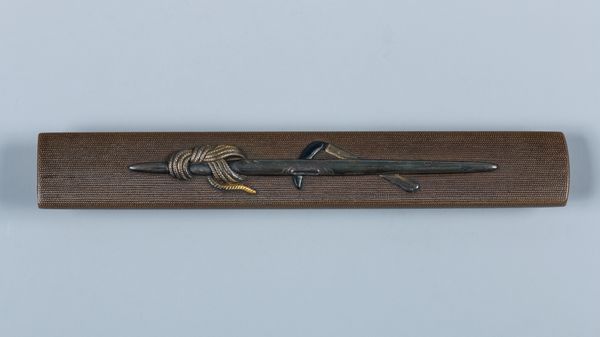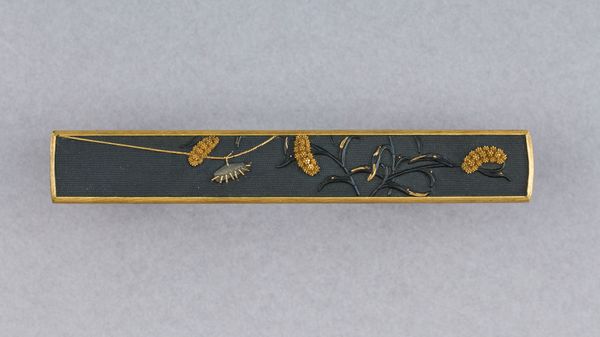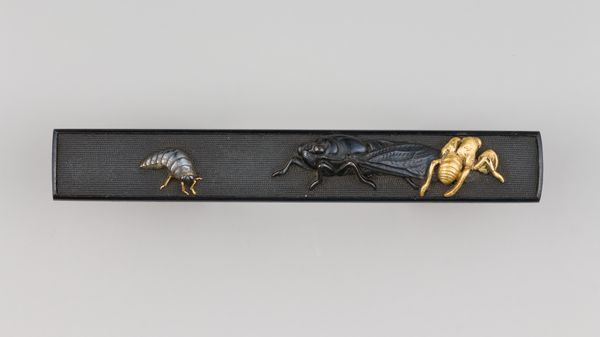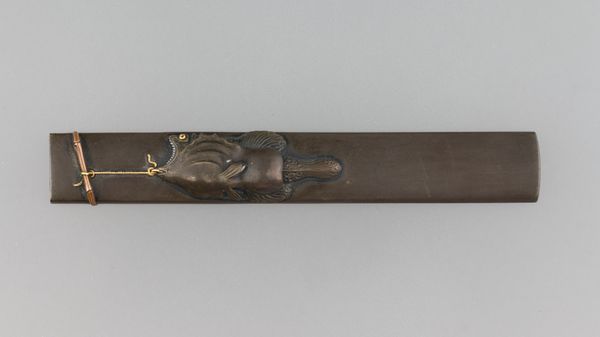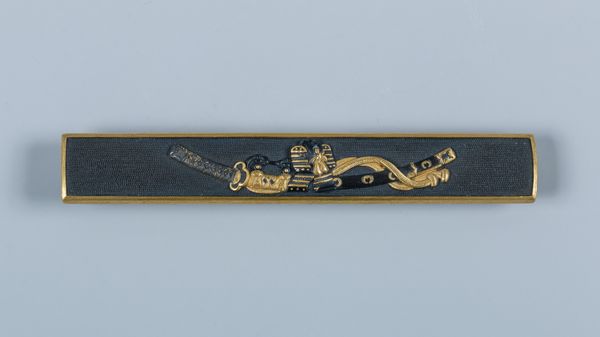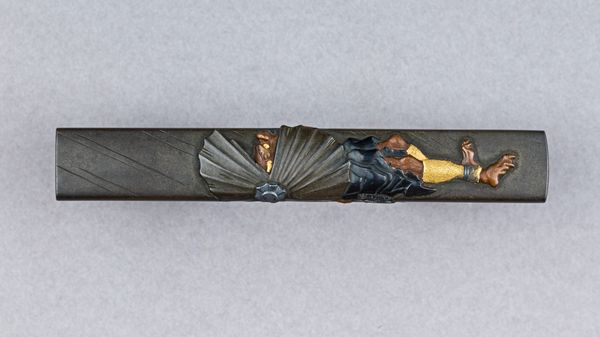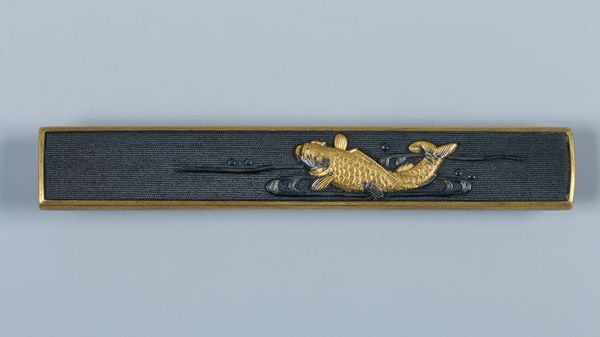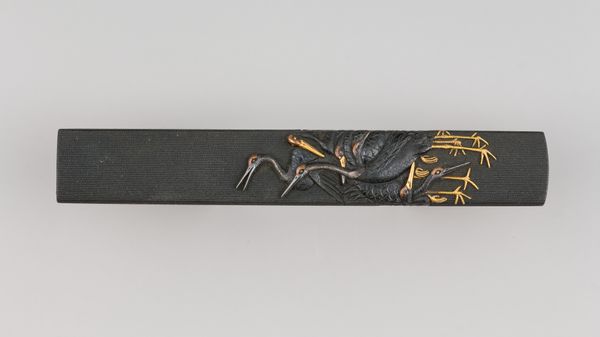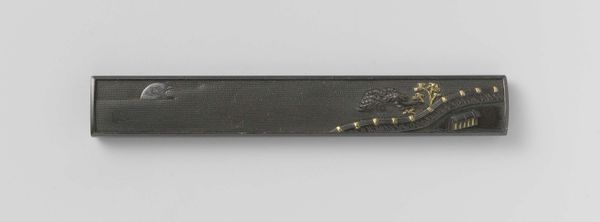
carving, silver, metal, sculpture, wood
#
carving
#
silver
#
metal
#
sculpture
#
asian-art
#
japan
#
sculptural image
#
sculpture
#
wood
#
sword
Dimensions: L. 3 13/16 in. (9.7 cm); W. 9/16 in. (1.4 cm)
Copyright: Public Domain
Curator: This elegant object is a knife handle, or kozuka, crafted sometime between 1650 and 1750 by Gotō Tsūjō. The medium comprises carving, silver, metal and wood. Editor: My first impression is one of serenity. The muted tones, the gentle waves… and that silver swan, gliding effortlessly. It's surprisingly soothing for something attached to what is essentially a weapon. Curator: Precisely. Its very existence highlights a duality inherent in samurai culture. We have violence interwoven with moments of extreme aesthetic refinement, an acceptance of life’s impermanence perhaps. The swan, in many cultures including Japan, has deep symbolism, often associated with grace, beauty, and purity. But also transformation. Editor: The transformation makes perfect sense in the context of weaponry, doesn’t it? From potential danger to controlled elegance, it contains and implies the power held within the wielder, reflecting cultural memory associated with this imagery across eons. Curator: It's important to consider, though, who had access to these displays of artistry. A samurai of high rank occupied a privileged position within a rigidly stratified society. Access to fine craftsmanship wasn't universally shared; consider the stark contrast between this artistic microcosm and the broader socio-political landscape. This very small art piece displays wealth and access that many in that same time period never had. Editor: So, this image is both a symbol of serenity and an emblem of social status? I think this image speaks so aptly and quietly to that dual role. Curator: Yes. The kozuka transforms from practical object to represent more nuanced class markers in early modern Japan. Its existence transcends simple aesthetics. Editor: It makes you consider the many lives lived within the history and story this object carries.
Comments
No comments
Be the first to comment and join the conversation on the ultimate creative platform.
